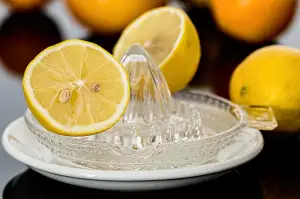Restore Your Cast Iron to Perfection: Expert Tips on How to Clean Rusty Cast Iron

Cast iron cookware is a beloved kitchen staple known for its durability and ability to retain heat evenly. However, over time, cast iron can develop rust if not properly maintained. Rusty cast iron can be restored to its former glory with the right cleaning techniques. In this article, we will guide you through expert tips on how to effectively clean rusty cast iron and ensure it remains in top condition for years to come. By following these steps, you can revive your rusty cast iron cookware and continue to enjoy its benefits in your culinary adventures.
Gather Necessary Supplies
To restore your rusty cast iron to perfection, you will need a few essential supplies. First, gather a wire brush or steel wool to scrub off the rust. Make sure it is specifically designated for cast iron cleaning to avoid damaging the surface. Next, have white vinegar or baking soda on hand to create a paste for rust removal. Additionally, you will need a clean cloth or paper towels for wiping and drying the cast iron after cleaning. Lastly, have vegetable oil or shortening available for seasoning the cast iron once it's clean. These supplies are key in bringing your rusty cast iron back to its former glory.
Scrub the Cast Iron with a Wire Brush
To effectively clean a rusty cast iron pan, start by scrubbing it with a wire brush. This will help remove any loose rust and debris from the surface of the pan. Make sure to use a brush specifically designed for cast iron to avoid damaging the seasoning. Scrub in circular motions, focusing on areas with stubborn rust spots. Take your time and be thorough in this step to ensure that all visible rust is removed before moving on to the next cleaning method.
Use Vinegar or Baking Soda Paste to Remove Rust
To effectively remove rust from your cast iron, you can use either vinegar or a baking soda paste. For vinegar, create a solution of equal parts water and white vinegar in a container large enough to submerge the rusty areas of the cast iron. Let the cast iron soak in the vinegar solution for several hours or overnight. The acidity of the vinegar will help break down the rust.
Alternatively, you can make a paste using baking soda and water. Mix these two ingredients until they form a thick paste-like consistency. Apply this paste onto the rusty spots on your cast iron and let it sit for a few hours. The abrasive nature of baking soda will aid in lifting off the rust when scrubbed with a sponge or brush.
Both methods are effective at removing rust, but remember to thoroughly rinse and dry your cast iron after using either technique to prevent any remaining residue from affecting its seasoning or causing future rusting issues.
Rinse and Dry the Cast Iron Thoroughly
After scrubbing off the rust, it's crucial to rinse the cast iron thoroughly under warm water. Make sure all traces of the rust and cleaning solution are removed. Use a clean cloth or paper towel to dry the cast iron completely. Leaving any moisture on the surface can lead to new rust forming. To ensure thorough drying, you can place the cast iron over low heat on a stove for a few minutes or pop it in a warm oven for about 10-15 minutes. Once dry, your cast iron will be ready for seasoning to prevent future rusting.
Season the Cast Iron to Prevent Future Rust
Seasoning cast iron is essential to prevent future rust and maintain its non-stick surface. To season your cast iron, preheat your oven to 350°F. Apply a thin layer of vegetable oil or melted shortening to the entire surface of the pan, including the handle. Place the pan upside down on the middle rack of the oven with a sheet of aluminum foil underneath to catch any drips. Bake for one hour, then turn off the oven and let the pan cool completely inside. Repeat this process a few times to build up a good seasoning layer that will protect your cast iron from rust and enhance its cooking performance.
Store the Cast Iron Properly to Maintain its Condition
To maintain the condition of your cast iron cookware, proper storage is essential. After cleaning and seasoning your cast iron, make sure it is completely dry before storing to prevent rust formation. Store your cast iron in a cool, dry place away from moisture to avoid any potential rusting. To protect the seasoning on the surface, consider placing a paper towel or cloth between stacked pieces of cast iron to prevent them from rubbing against each other. Avoid storing cast iron with its lid on tightly to allow air circulation and prevent any trapped moisture that could lead to rust. By following these storage tips, you can help prolong the life and quality of your beloved cast iron cookware for years to come.
**Conclusion and Maintenance Tips**
In conclusion, restoring rusty cast iron cookware is a rewarding process that can bring new life to your kitchen essentials. By following the steps outlined above, you can effectively remove rust and prevent future corrosion. Remember to always dry your cast iron thoroughly after cleaning to avoid any moisture buildup. Additionally, regular seasoning with oil will create a protective layer on the surface, keeping rust at bay. Store your cast iron in a cool, dry place away from moisture to maintain its condition for years to come. With proper care and maintenance, your cast iron cookware will continue to serve you well and develop a natural non-stick patina over time.
Published: 15. 04. 2024
Category: Home



